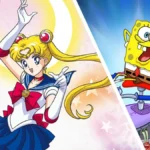If This question Is knocking your head Then I can guess that you’re interested on this topic, So called “Anime” Well if that’s it Can I think You as a beginner for few minutes cause after This you won’t Be a beginner anymore and that’s a Promise.

What Is a Anime??

Anime (Japanese: アニメ, IPA: ⓘ) is hand- drawn and computer-generated animation originating from Japan. Outside Japan and in English, anime refers specifically to animation produced in Japan.[1] However, in Japan and Japanese, anime (a term derived from a shortening of the English word animation) describes all animated works, regardless of style or origin. Many works of animation with a similar style to Japanese animation are also produced outside Japan. Video games sometimes also feature themes and art styles that are sometimes labelled as anime.
Sounds Kind Of Hard Huh?? Let me tell you One more Thing A-N-I-M-E is Equal To Emotion. All You Need is Just Watch and Feel. Trust Me When You’ll Start to Watch you might get Addicted to It.
History Of Anime: The Best Thing Ever happen in the World

Animation in Japan began in the early 20th century, when filmmakers started to experiment with techniques pioneered in France, Germany, the United States, and Russia.[20] A claim for the earliest Japanese animation is Katsudō Shashin (c. 1907),[21] a private work by an unknown creator.[22] In 1917, the first professional and publicly displayed works began to appear; animators such as Ōten Shimokawa, Seitarō Kitayama, and Jun’ichi Kōuchi (considered the “fathers of anime”) produced numerous films, the oldest surviving of which is Kōuchi’s Namakura Gatana.[23] Many early works were lost with the destruction of Shimokawa’s warehouse in the 1923 Great Kantō earthquake.[24]
By the mid-1930s, animation was well-established in Japan as an alternative format to the live-action industry. It suffered competition from foreign producers, such as Disney, and many animators, including Noburō Ōfuji and Yasuji Murata, continued to work with cheaper cutout animation rather than cel animation.[25] Other creators, including Kenzō Masaoka and Mitsuyo Seo, nevertheless made great strides in technique, benefiting from the patronage of the government, which employed animators to produce educational shorts and propaganda.[26] In 1940, the government dissolved several artists’ organizations to form the Shin Nippon Mangaka Kyōkai.[a][27] The first talkie anime was Chikara to Onna no Yo no Naka (1933), a short film produced by Masaoka.[28][29] The first feature-length anime film was Momotaro: Sacred Sailors (1945), produced by Seo with a sponsorship from the Imperial Japanese Navy.[30] The 1950s saw a proliferation of short, animated advertisements created for television.[31]
Attributes Of Anime

Anime differs from other forms of animation by its art styles, methods of animation, its production, and its process. Visually, anime works exhibit a wide variety of art styles, differing between creators, artists, and studios.[50] While no single art style predominates anime as a whole, they do share some similar attributes in terms of animation technique and character design.
Anime is fundamentally characterized by the use of limited animation, flat expression, the suspension of time, its thematic range, the presence of historical figures, its complex narrative line and, above all, a peculiar drawing style, with characters characterized by large and oval eyes, with very defined lines, bright colors and reduced movement of the lips.[51][52]






